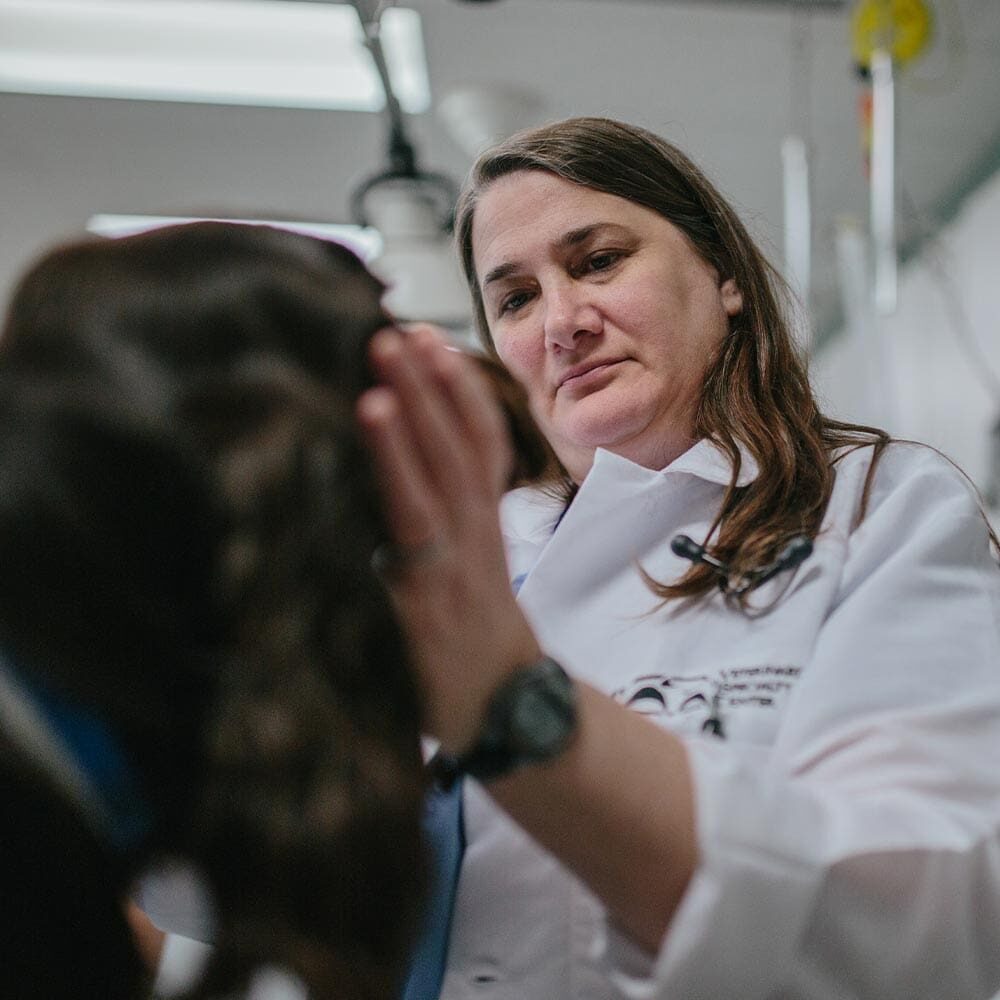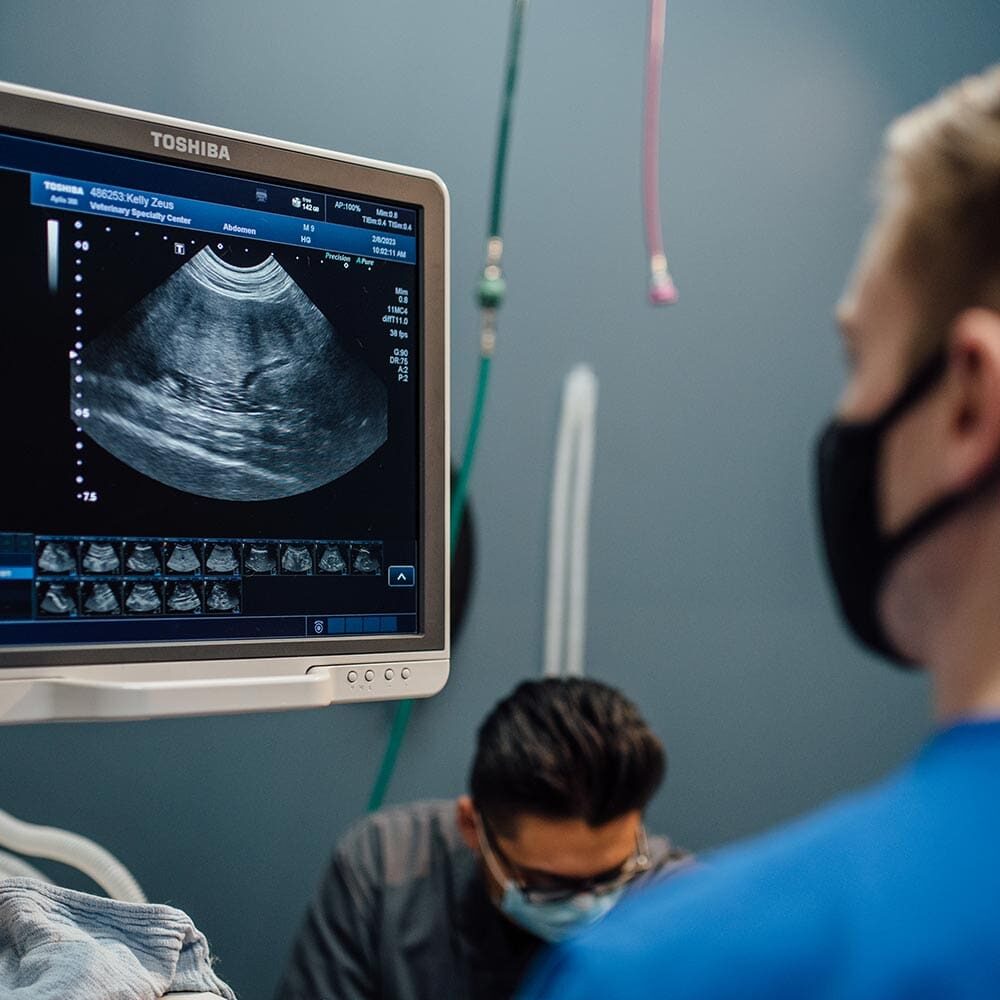What Causes Cirrhosis?
Cirrhosis occurs most commonly when there has been undetected inflammation of the liver (usually over months or years) that has caused scarring of the liver. Because the liver has minimal pain sensation, it is very common for inflammation to go unnoticed until signs of liver failure arise (bloated abdomen, profound lethargy, weakness, confusion, anorexia), icterus. At this stage, the liver is cirrhotic–rather than being a spongy filter of the blood, it is a thick piece of leathery scar tissue.
Clinical Signs
When cirrhosis occurs, the abdominal blood vessels that course through the liver become obstructed and begin to leak fluid causing a bloated fluid wave in the abdomen. This backup of fluid occurs in the intestinal vessels as well, causing a poor appetite, nausea and drooling, and sometimes vomiting or diarrhea. Additionally, because of the detoxifying function of the liver, some patients become mentally abnormal and may have seizures.




How Do We Diagnose Cirrhosis?
Patients with suspected cirrhosis require blood and urine tests as well as radiographs (X-rays) and ultrasound examinations. Because heart failure can cause abdominal fluid accumulation, radiographs of the chest cavity are recommended to evaluate the size and structure of the heart and look for any evidence of lung disease. Abdominal radiographs are not generally helpful when abdominal fluid is present; fluid will obscure the view of many organs. Ultrasound is significantly more helpful in establishing a cause for abdominal effusion and an experienced veterinary radiologist can provide a lot of information about the size of the liver and associated blood vessels.
A biopsy of the liver can help to determine the cause of the liver disease as well as the stage of cirrhosis. A biopsy can help determine the best course of therapy. Prior to biopsy, tests are performed to determine if anesthesia and biopsy are safe. Many anesthetic agents are metabolized and excreted by the liver, so extra precautions will be taken by the anesthesia team at Veterinary Specialty Center to ensure there are no complications.
Because the liver is involved in manufacturing the proteins involved in blood clotting, coagulation tests are performed. When these tests are normal, it is not a guarantee that bleeding will not occur as there are many factors that affect bleeding. It is important to consider the risks and potential benefits of doing a biopsy in patients with liver failure. A biopsy is generally performed via laparoscopy or abdominal surgery as needle biopsy using ultrasound guidance provides smaller less accurate samples.
Treatment
Patients who present with evidence of hepatic cirrhosis may need intensive support, particularly if they have developed secondary gastrointestinal or neurologic complications. These patients sometimes need intravenous fluids, medications to control nausea and vomiting, anti-seizure medications, transfusions, and nutritional support even before a biopsy or other tests can be performed.
Therapeutic options for patients with cirrhosis are sometimes revealed by biopsy results. If there is evidence of active inflammation in the liver, anti-inflammatory and immune-modulating medications are often started in an effort to preserve or improve liver function. There are patients in which, after consideration of biopsy risks and benefits, these medications are started empirically in the hope of improving a patient’s grave condition. Patients who show improvements often require lifelong immune modulation, supportive medications for the liver, and prescription diets that reduce the workload for the liver.
Prognosis
The prognosis for patients with cirrhosis is guarded long-term and depends on the severity of cirrhosis.
By the time of cirrhosis, biopsy and treatment are less likely to be helpful. The prognosis is especially guarded in patients who have neurologic signs or bleeding tendencies associated with their liver failure. Depending on the stage of cirrhosis, sometimes medications slow the process of liver failure and patients will improve for some time.


Long-Term Follow-Up
Patients with suspected or confirmed cirrhosis of the liver are generally treated by the internal medicine specialists at Veterinary Specialty Center. Patients who respond to supportive therapy and are released on medications, prescription diets, and supportive supplements need regular recheck examinations. Patients with liver inflammation requiring immune-modulating medications need monitoring of blood tests to assess tolerance of medications and determine if dosage adjustments are necessary. Because decisions about changes in medication, diet, and supplements are based on observations made during the physical exam in addition to other testing, our recommendation is that follow-up for this disease be done at Veterinary Specialty Center, particularly if you or your primary care veterinarian want continued input and recommendations from the internist. All routine preventive care should continue with your primary care veterinarian, but lifelong precautions for medications and anesthesia will be necessary.

